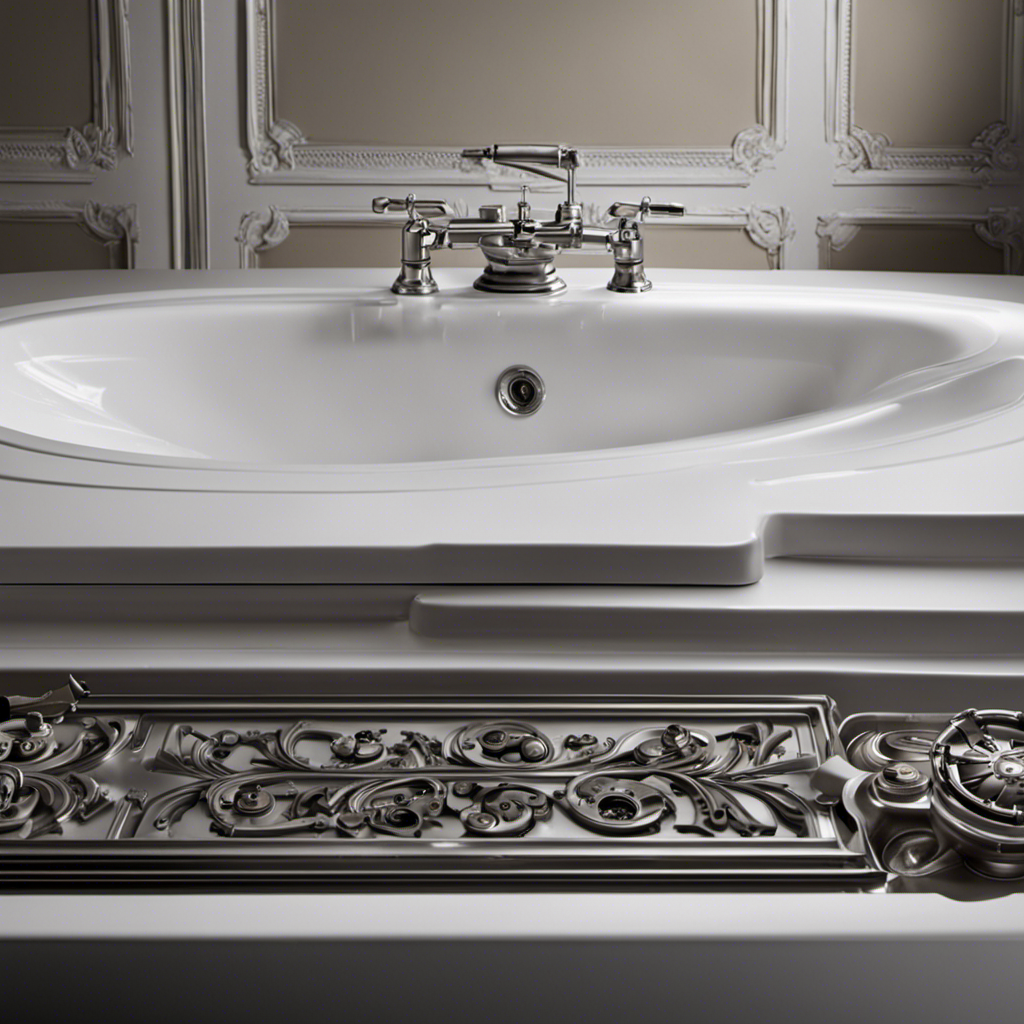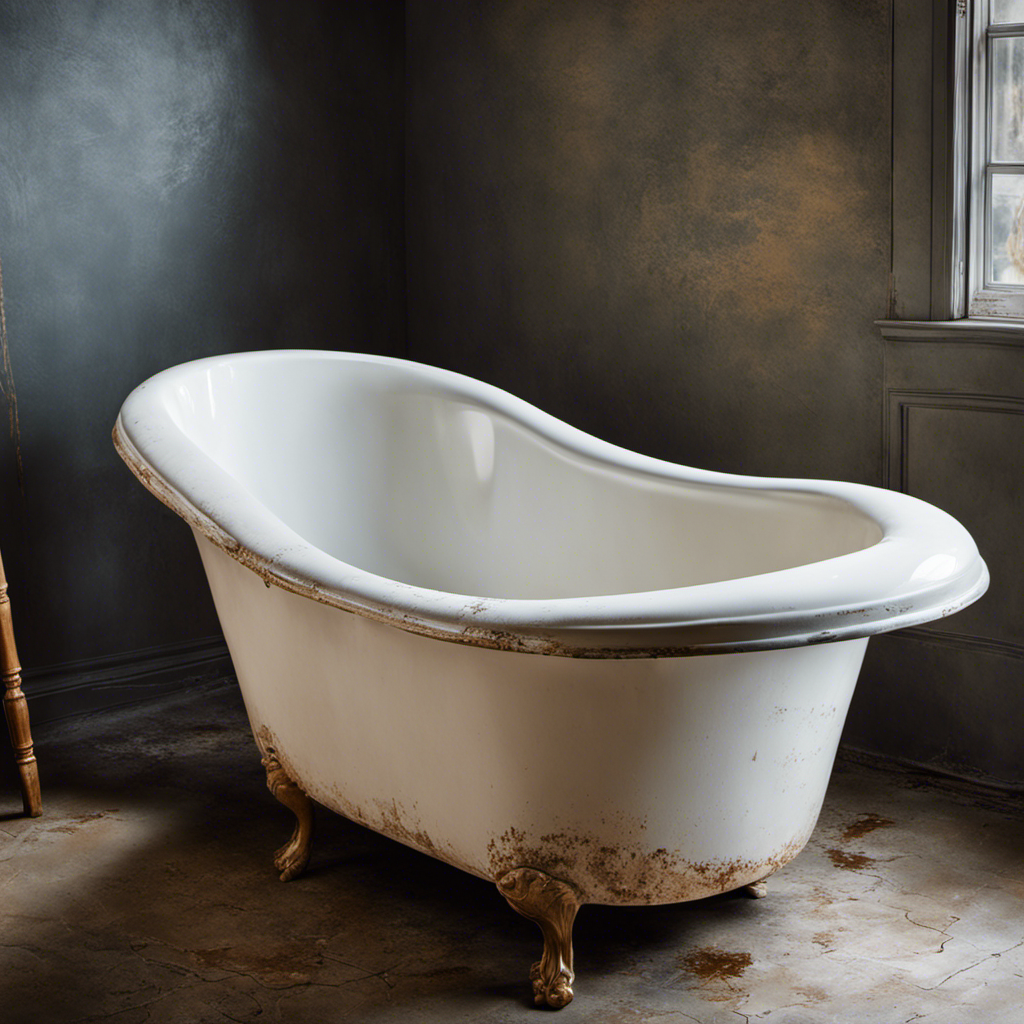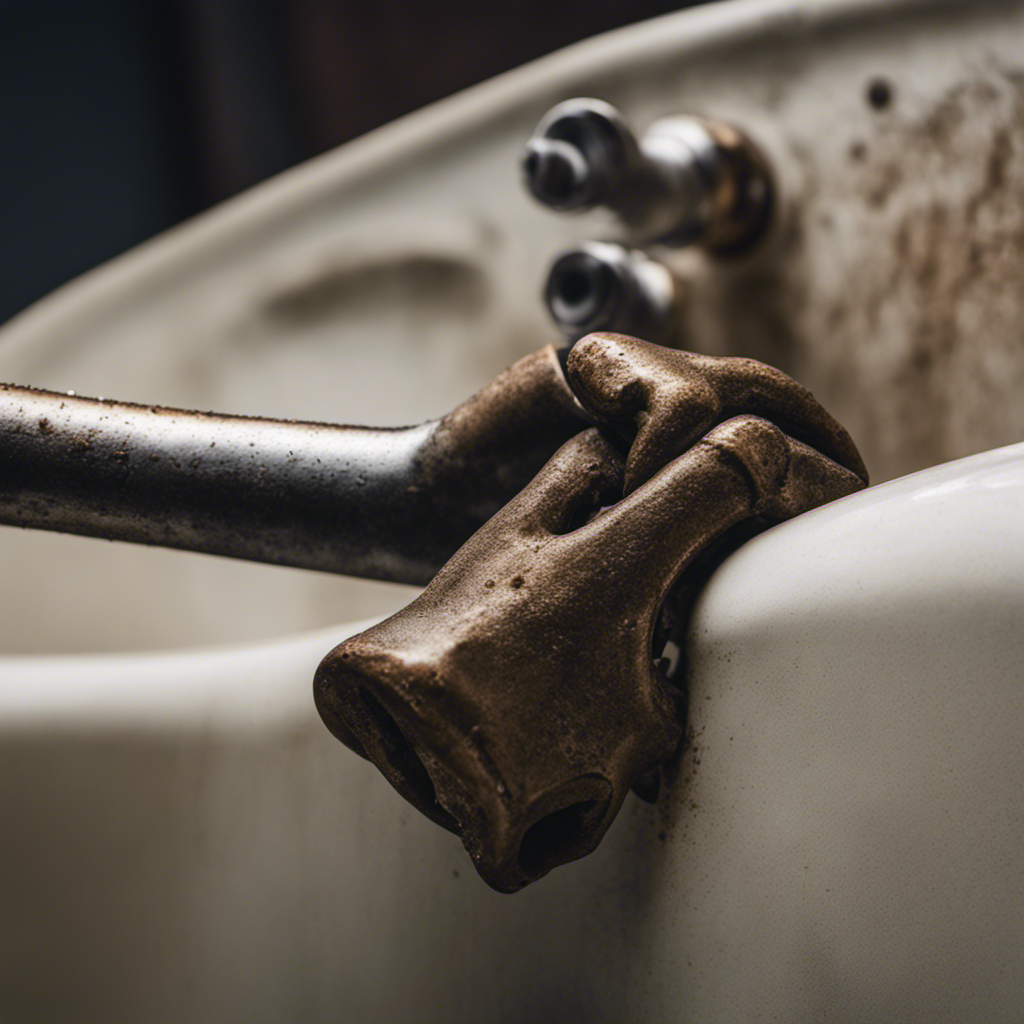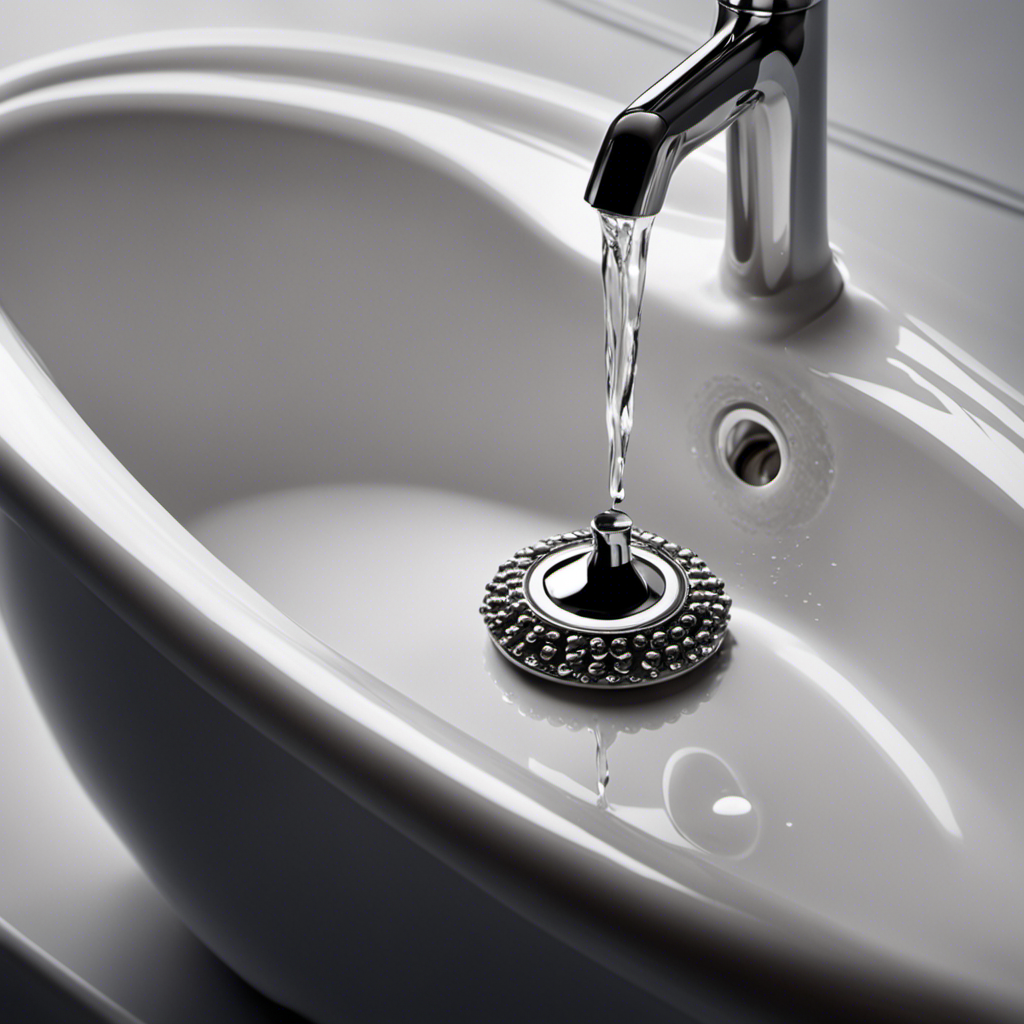As I stood in my bathroom, staring at the stubbornly clogged bathtub drain, I knew I had to take matters into my own hands. With the right tools and a little know-how, I embarked on the mission to dismantle the drain and restore it to its proper working order.
In this guide, I will walk you through the step-by-step process of disassembling the drain cover, removing the drain flange, and thoroughly cleaning and reassembling all the necessary components.
Get ready to conquer that troublesome drain once and for all.
Key Takeaways
- Use the appropriate tools such as pliers, screwdriver, and drain removal tool to disassemble the drain without causing damage.
- Take caution when removing the drain body to avoid damaging surrounding pipes or fixtures.
- Maintain a clean and clog-free bathtub drain by avoiding pouring grease or oil down the drain, using a drain cover or strainer, and periodically flushing the drain with hot water.
- When disassembling the drain cover, remove the screws, inspect and clean or replace the gasket if necessary, and check the strainer for clogs or debris.
Required Tools and Materials
To take apart the bathtub drain, you’ll need a pair of pliers, a screwdriver, and a drain removal tool. These tools are essential for successfully disassembling the drain without causing any damage.
Here are the step-by-step instructions to follow:
-
Begin by locating the drain cover and removing it using the screwdriver. This will expose the drain body.
-
Next, use the pliers to grip the drain body firmly. Rotate it counterclockwise to loosen it from the drain pipe.
-
If the drain body is still stuck, you can use the drain removal tool to provide additional leverage. Insert the tool into the drain body and rotate it to loosen the connection.
-
Once the drain body is loose, carefully lift it out of the drain pipe. Be cautious not to damage any surrounding pipes or fixtures.
Preparing the Bathtub Drain
Start by removing the screws on the drain cover to prepare for the next step.
The bathtub drain is prone to common problems such as clogging and slow draining. To maintain a clean and clog-free drain, regular maintenance is essential.
Here are some tips to help you keep your bathtub drain in good working condition. Firstly, avoid pouring grease or oil down the drain as it can solidify and cause clogs.
Additionally, using a drain cover or strainer can catch hair and debris before they go down the drain.
Lastly, periodically flushing the drain with hot water can help dissolve any buildup and keep the drain clear.
Disassembling the Drain Cover
After removing the screws, you can easily disassemble the drain cover. This step is crucial for drain cover maintenance and troubleshooting bathtub drainage issues. To help you visualize the process, here is a table detailing the components involved:
| Component | Description |
|---|---|
| Drain cover | Metal or plastic cover over the drain |
| Screws | Fasteners used to secure the cover |
| Gasket | Rubber seal between cover and drain |
| Strainer | Mesh or perforated plate to catch debris |
To disassemble the drain cover, follow these steps:
- Use a screwdriver to remove the screws securing the cover.
- Lift the drain cover gently to reveal the gasket underneath.
- Inspect the gasket for any wear or damage.
- If necessary, remove the gasket and clean or replace it.
- Finally, check the strainer for any clogs or debris and clean it if needed.
Removing the Drain Flange
Once you’ve removed the drain cover, your next step is to detach the drain flange. To do this, you’ll need a drain wrench or a pair of pliers.
Start by locating the screws that secure the flange to the drain pipe. Use the drain wrench or pliers to loosen and remove these screws.
Once the screws are removed, you can gently pull the drain flange upwards to detach it from the drain pipe. Be careful not to damage the surrounding bathtub surface during this process.
After removing the flange, you can proceed with replacing the drain plug or fixing a leaky drain.
Now that the drain flange is detached, it’s time to move on to the next step: cleaning and reassembling the drain components.
Cleaning and Reassembling the Drain Components
Now that the drain flange is detached, you can proceed with cleaning and reassembling the drain components. It is important to properly clean and maintain the drain to prevent clogs and ensure proper drainage. Here are the steps to clean and reassemble the drain components:
-
Clean the drain components: Remove any debris or buildup from the drain flange, drain body, and drain pipe using a brush or cloth. Ensure that the components are free from any blockages or obstructions.
-
Replace the drain gasket: If the drain gasket is worn out or damaged, it is recommended to replace it. Simply remove the old gasket and install a new one in its place, ensuring a proper seal.
-
Reassemble the drain components: Carefully reattach the drain flange to the drain body, making sure it is securely fastened. Then, reconnect the drain pipe and tighten any fittings as necessary.
By following these steps, you can ensure a clean and properly functioning bathtub drain.
If you’re still experiencing any issues, such as slow drainage or leaks, it may be necessary to troubleshoot further or seek professional assistance.
Frequently Asked Questions
How Do I Know if My Bathtub Drain Needs to Be Taken Apart?
To determine if my bathtub drain needs disassembly, I assess for signs of clogs or slow drainage. If these issues persist despite attempts to unclog, then I would follow the steps to take apart the bathtub drain.
Can I Use Regular Household Tools to Disassemble the Bathtub Drain?
Yes, you can use regular household tools to disassemble the bathtub drain. However, it’s important to note the potential risks involved. Make sure to use the appropriate tools and take necessary precautions to avoid any damage or injury.
Is It Necessary to Shut off the Water Supply Before Taking Apart the Bathtub Drain?
No, it is not necessary to shut off the water supply before taking apart the bathtub drain. However, it is recommended to wear gloves for protection and to use a plunger to remove any clogs.
What Should I Do if the Drain Cover Is Stuck and Won’t Come Off?
If the drain cover is stuck and won’t come off, try using a plunger or a wire hanger to loosen it. If those methods don’t work, you can try using a drain snake. To prevent the drain cover from getting stuck again, regularly clean and maintain it.
Is It Important to Clean the Drain Components Before Reassembling Them?
It is indeed important to clean the drain components before reassembling them. By removing any buildup or debris, you ensure proper functionality and prevent future clogs. Follow these steps to reassemble the drain properly.
Conclusion
In conclusion, I hope this guide has provided you with the necessary knowledge and steps to confidently take apart your bathtub drain.
By following these instructions, you can easily disassemble the drain cover, remove the drain flange, and clean and reassemble the drain components.
Picture yourself effortlessly maneuvering the tools, feeling a sense of accomplishment as you successfully complete each step.
Imagine the satisfaction of a clean and functional drain, allowing you to enjoy a relaxing bath without any worries.










